The U-Shaped Curve
In Mark Zuckerberg’s famous words, Facebook is a tech company, not a media company. Yet we know that the reality is more complicated than that. Regular users, politicians, and publishers are all affected by changes in the Facebook algorithm.
The U-Shaped curve is a good example.
In 2016 we saw a global trend affecting almost all news publishers’ Facebook reach. Engagement per post dipped in the first half of the year and then it rose again – forming the U-shaped curve.
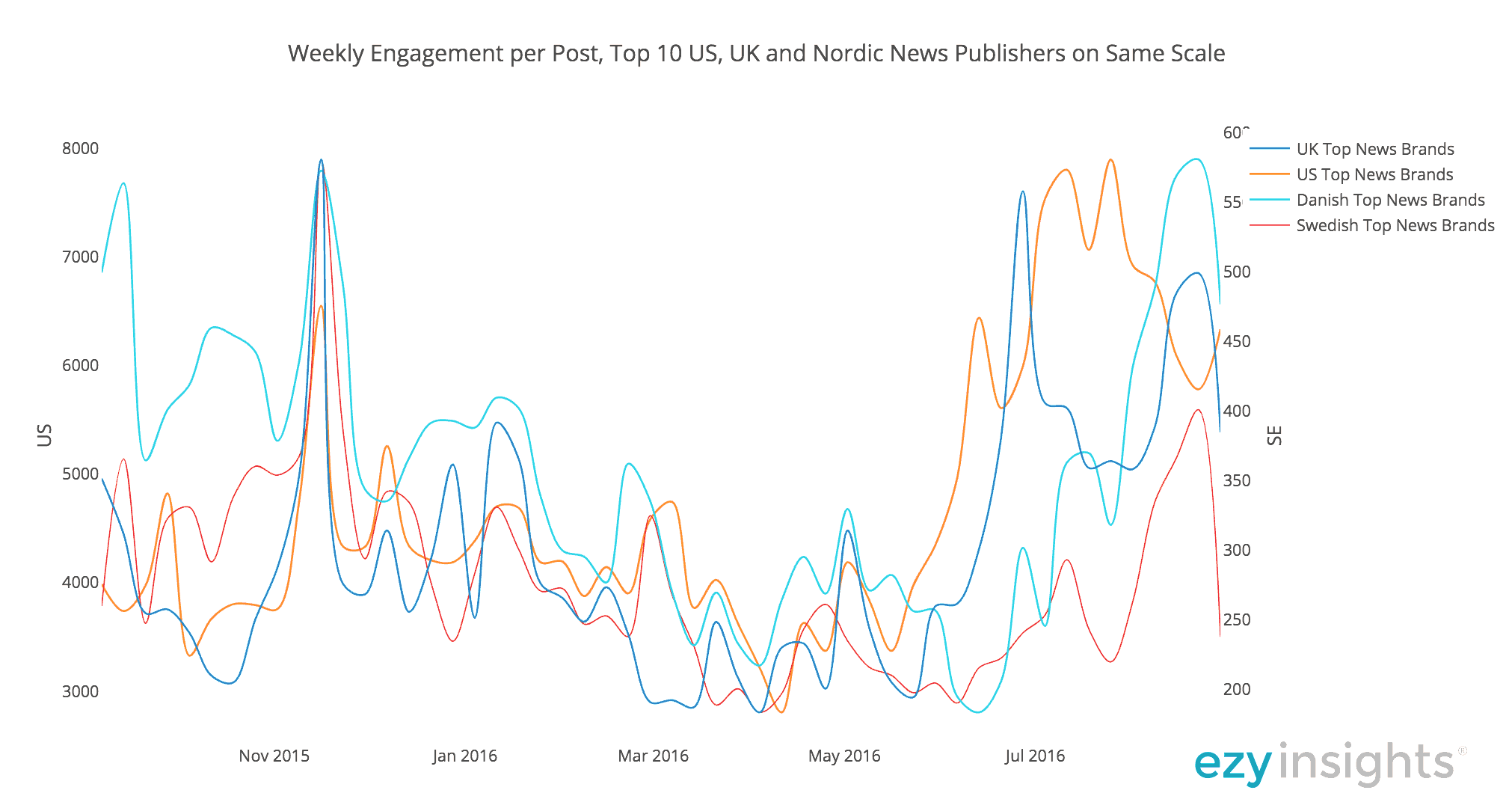
After analysing how these algorithm changes affected Nordic countries and how Spain effectively dodged them, it is time to compare UK, France, and Germany.
The analysis includes ten biggest general news publishers from each country, who all had the highest engagement rates on Facebook in the Third Quartile of 2016.
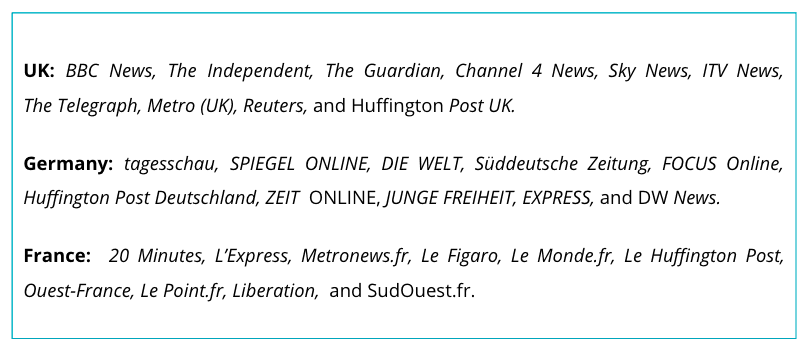
The analysis is based on data of the publisher’s Facebook posts, which include links, status updates, videos, photos, and live video posts.
The Scale
Let’s first take a look at the overall engagement to get a general picture of the scales for the three countries.
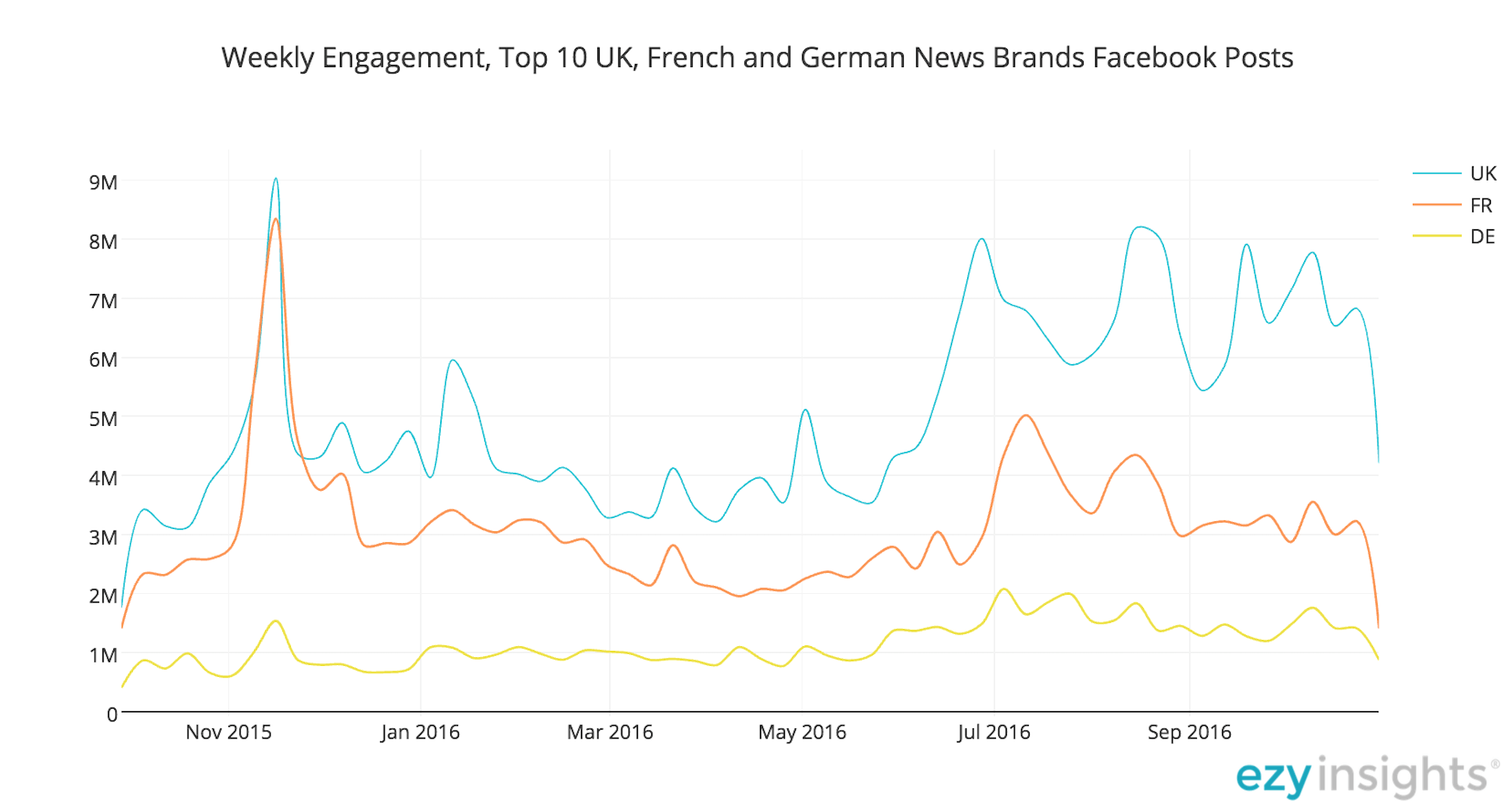
UK’s engagement volumes are double that of France, and triple that of Germany. The spike in November 2015 is on the week of Paris terrorist attacks.
We also see that the news publishers in the UK, France, and Germany more than doubled their engagement over the year. The percentual growth between the first week of April and first week of July was around 110% for UK and Germany, and nearly 140 % for France.
The change took off first in the UK, then in France, and finally in Germany.
What has happened?
This rise in engagement corresponds with the live video taking off. Average engagement on live video posts has been very high, reaching over 6000 engagements per post in the UK. In comparison, links get circa 1000 engagaments per post on average.
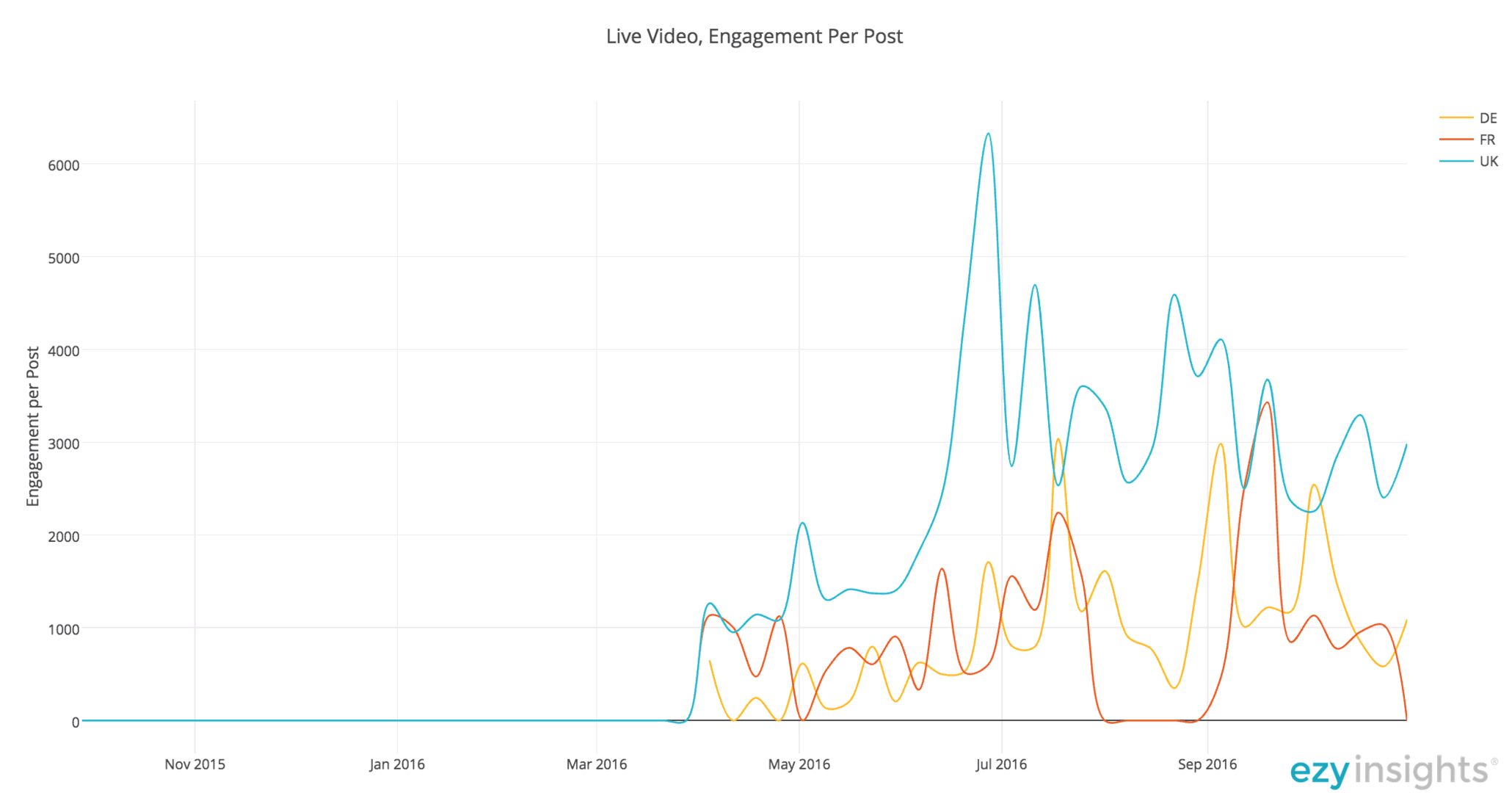
The case of live video is a good example of how different post types (link, video, photo or live video) may affect engagement and reach.
Publishers should consider how to use different types of posts, and there are two main things to think about.
First, Facebook algorithm changes target different post types in different ways. Second, there are strong country-specific differences in how different content types work for news publishers.
Let’s take a look.
How Algorithm Changes Affected Different Post Types
The graph below shows how Facebook algorithm changes have affected news publishers in the UK, France, and Germany for all types of posts:

There are several time points when all the countries’ spikes or drops coincide, indicating a global trend that was caused by major changes in the Facebook algorithm:
– the rising trend from March towards the summer after introduction and promotion of live videos
– the spike in July, directly after prioritizing friends and family posts
– the drop in August after Facebook started fighting clickbait and tried predicting more informative stories
– the rise back up again in September.
Now let’s break down how the algorithm changes affected different post types.

We can see the U-shaped pattern taking its toll on link posts.
The average engagement is very similar for the UK and France – circa 1000 engagements per link post. In Germany, however, links gather circa 300 engagements per post.
Contrary to some fears, priorization of friends and family posts in the News Feed actually increased news brands’ engagement in July. This was especially true for link posts in all three countries.
From the spike in November we can see that Paris attacks were reported mostly as link post in the UK and Germany. According to the graph below, we can also see that in France as well as in the UK the event was also reported using video posts.
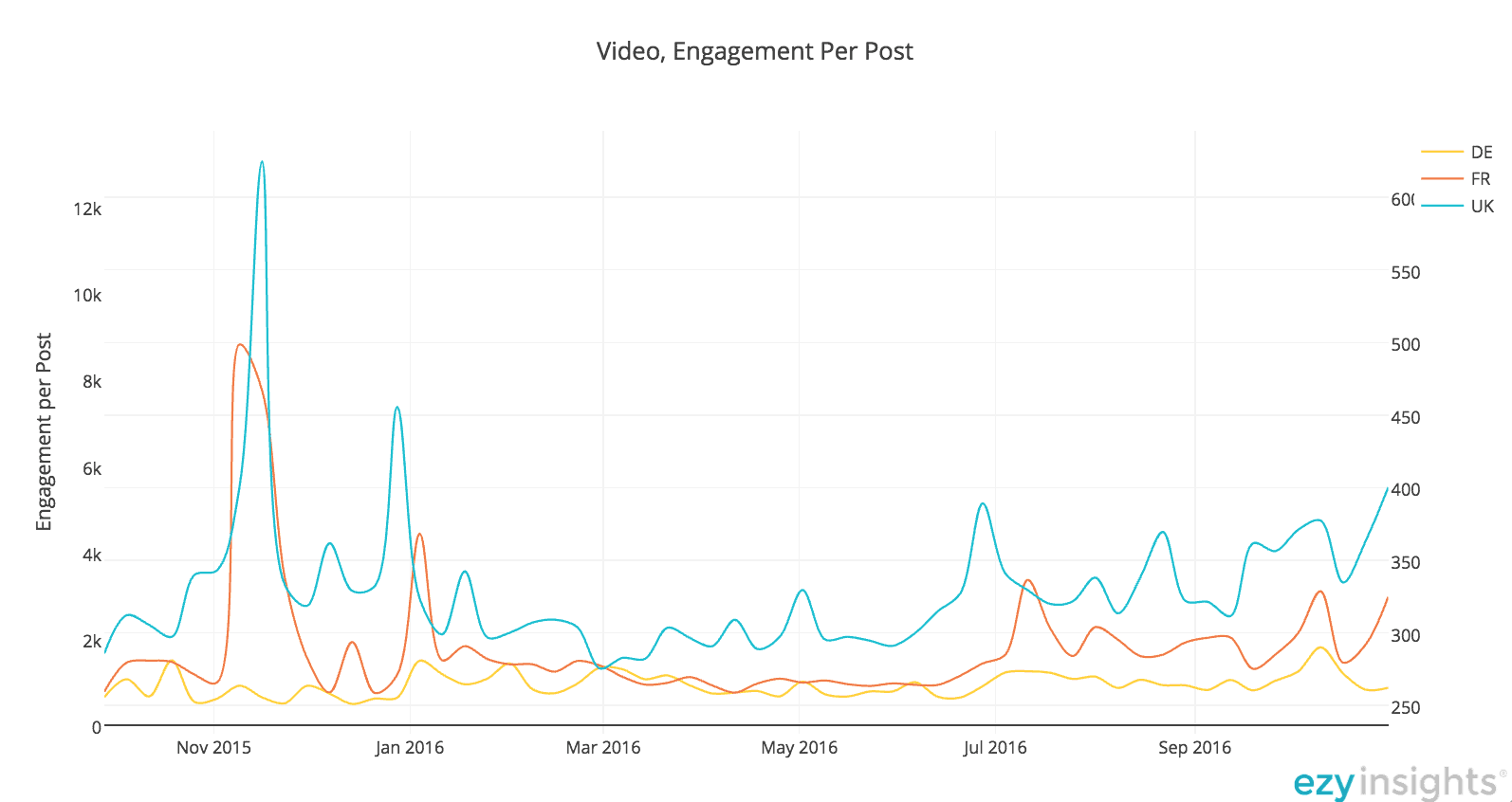
With video, France drops to Germany’s scale, whereas UK does much better.
In the UK, videos get twice more engagement than links, but in France and Germany video engagement is on the same level with link engagement.
Video engagement, much like links, rose up again in July after the friends and family Facebook algorithm change. It is continuing to grow in all three countries.
Photo posts seem to be the least affected by the algorithm changes until August, when their engagement suddenly goes down. This is the time when Facebook announced the algorithm change to predict more informative content.
There are two high spikes in UK. These are the times of Brexit vote (May) and referendum (June). 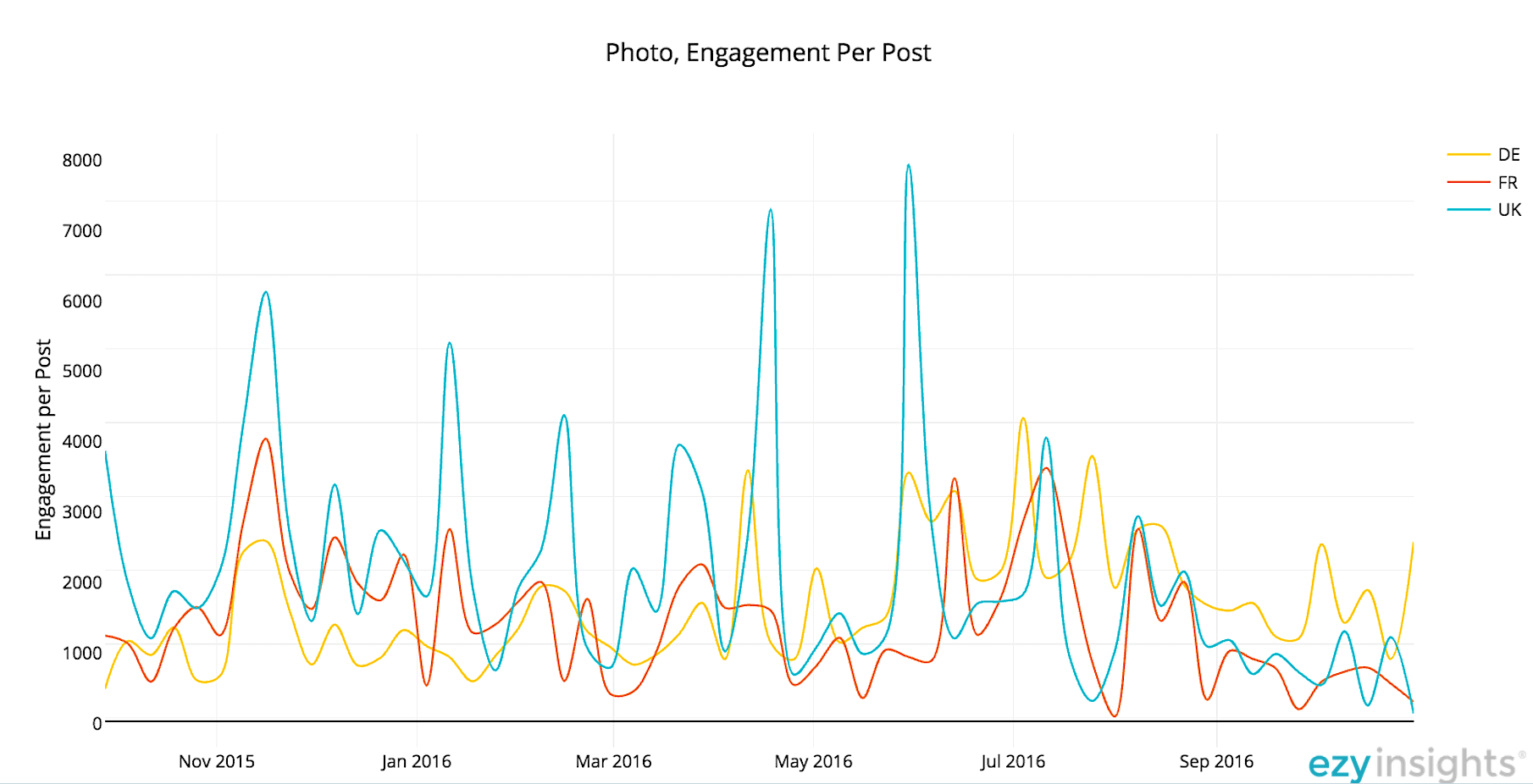
Visual Formats
Finally, lets’ take a look at the differences between the countries.
Bear in mind that each country is unique, and therefore some of the differences can stem from other reasons than the Facebook algorithm changes.
The charts show the average engagement per post type in each country. For example in UK the average engagement per live video post is circa 2600 and circa 1150 per link.
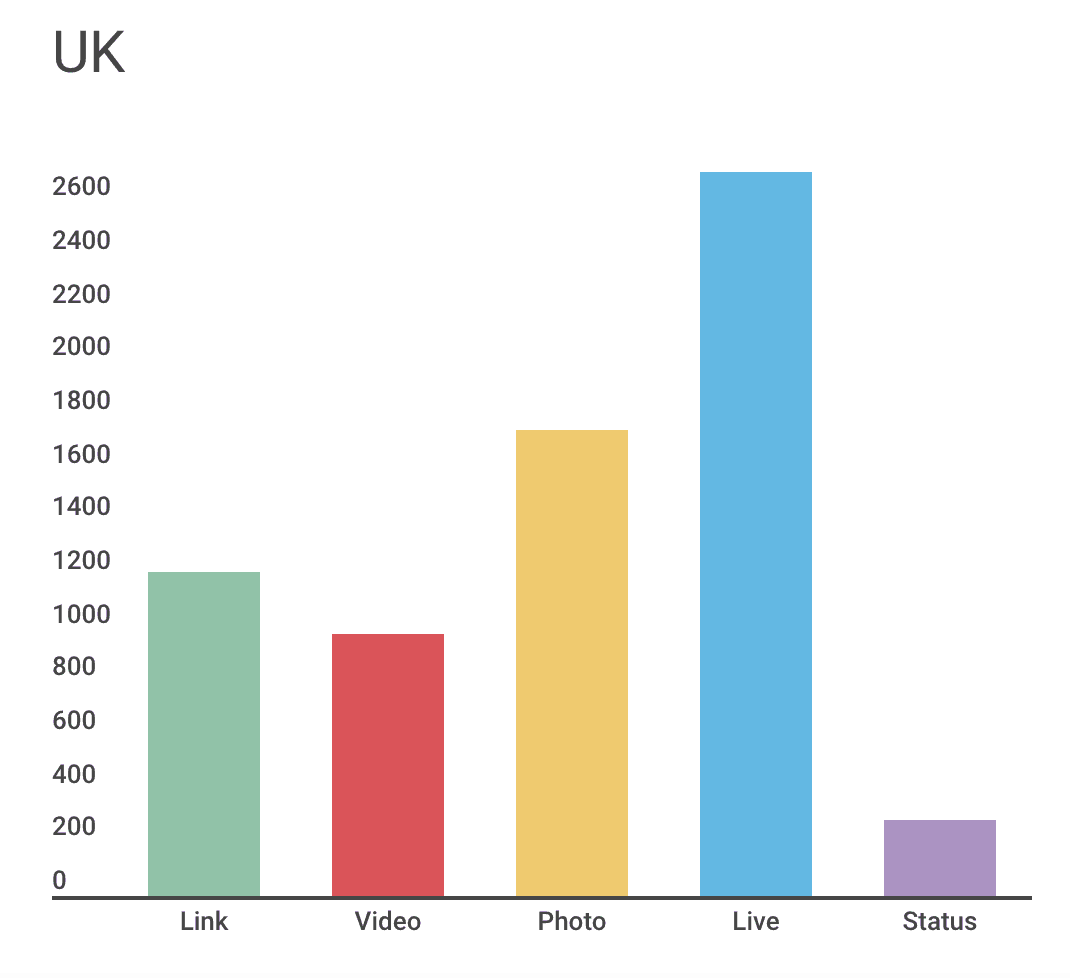

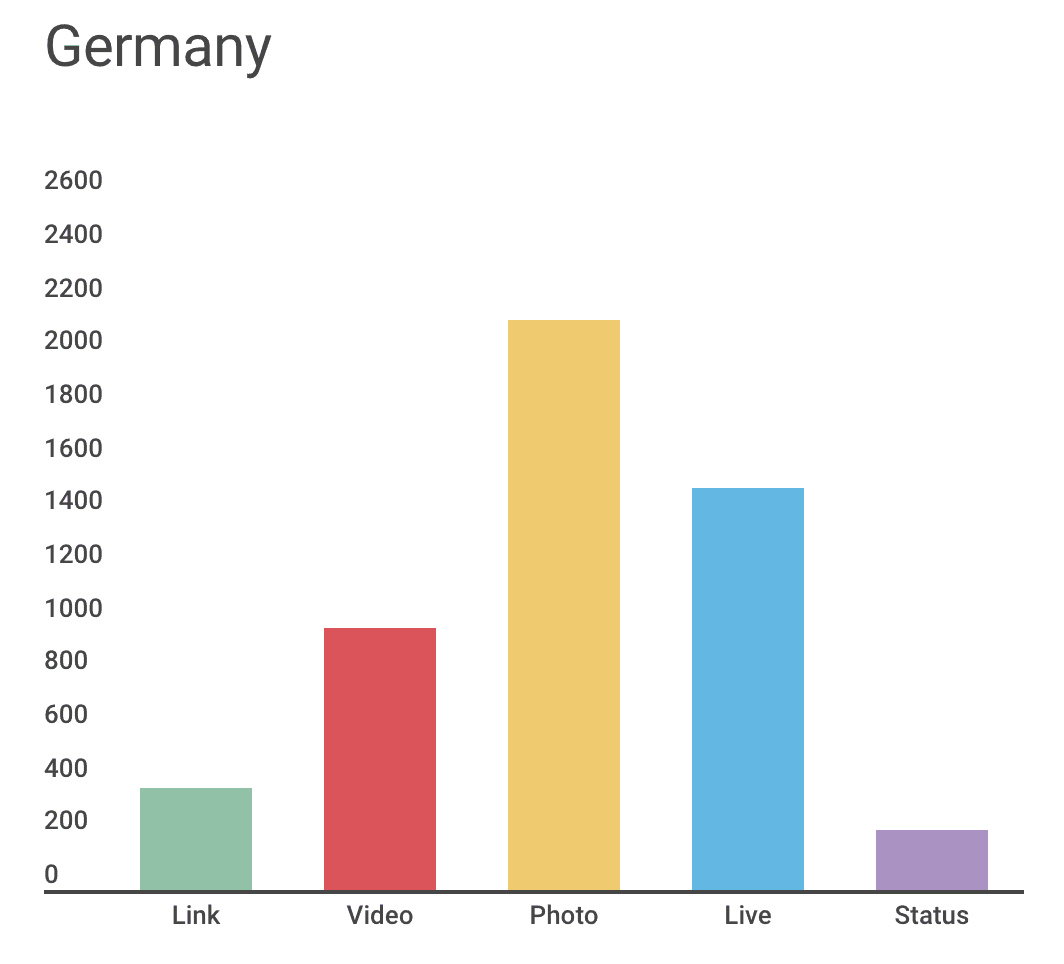 Publishers who want to improve their results in these markets should ask:
Publishers who want to improve their results in these markets should ask:
Why do link posts in Germany get so much less engagement on average than in the UK or France?
On the other hand, what can other publishers learn from photo posts in Germany?
Perhaps it’s worth trying out the French approach and publish different types of posts regularly? Engagement is spread much more evenly between different post types in France.
Where does video work best? Its share is very high in France – due to Paris attacks reporting.
Finally, following in the footsteps of the US media, live videos became huge in the UK – other European countries should take note.
Fear Not the Change
One needs to rethink the fears felt towards Facebook algorithm. Despite all the changes introduced in the last twelve months, data shows that news publishers’ engagement rates bounced back, reaching higher levels than before. This trend is true in the UK, Germany, and France – just as in the US, Spain, and the Nordics.
What the above analysis shows is that Facebook gives different visibility to different post types. Generally, link posts’ average engagement varies much less in time than that of other formats, while live videos’ engagement can go through the roof.
Thus, it makes sense to pay attention to post types when building a successful Facebook strategy. Increasing the amount of posts steadily makes sense. As does experimenting with the different image-based formats.
Top image credit @Volkan Olmez
.
